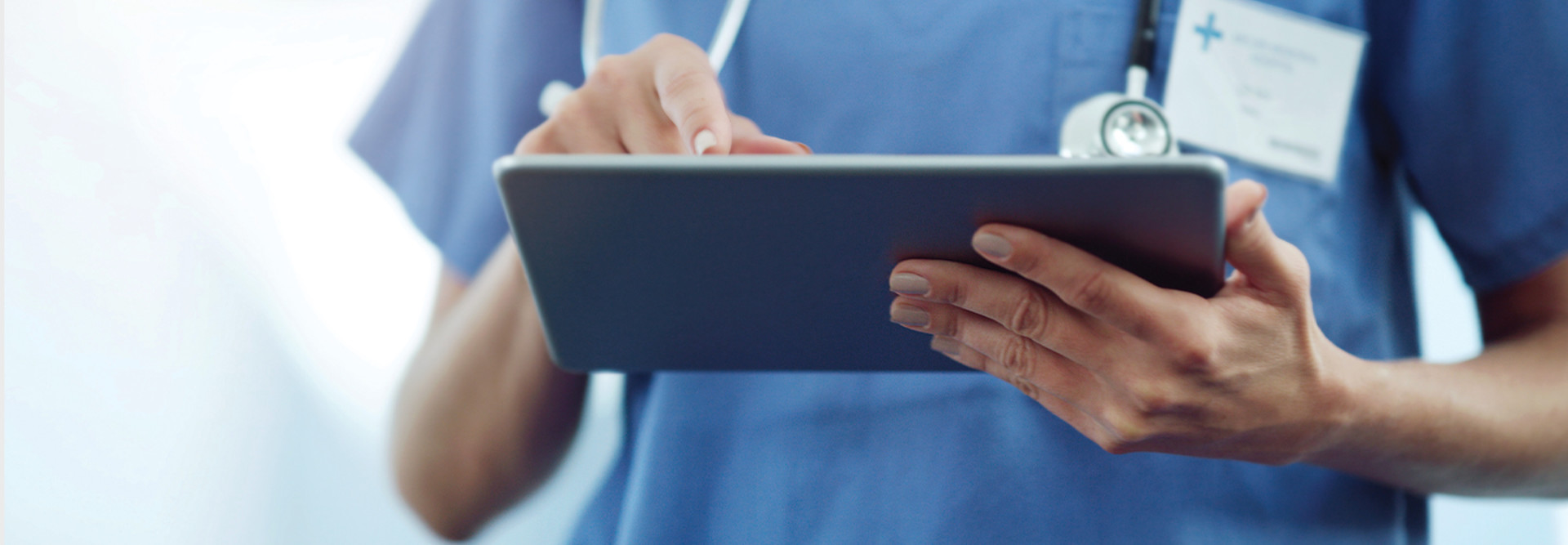1. How does mobility improve the patient experience?
Knowing the speed and capabilities that a mobile device — and, ultimately, a comprehensive program — can bring to healthcare delivery is a key motivator for IT leadership to make and deploy a plan.
“Mobility is bringing more real-time patient data to caregivers, enabling them to spend more time with patients and make decisions faster,” Sullivan said in the Twitter chat. “The combination of these changes contributes to a higher quality of patient care and an improved experience.”
2. In what ways can mobile tools support virtual care?
Mobile tools such as tablets and smartphones are vital in social distancing efforts — both in and out of a hospital setting — while helping to maintain personal connections.
Integrated with user-friendly and HIPAA-compliant videoconferencing platforms, the tools “enable virtual care by providing voice, text and video streaming that can successfully replicate the experience of an in-person physician visit,” Sullivan said.
And, he adds, the tools allow for quicker response: “Digital health records, imaging and diagnostics of a patient can be remotely accessed on an enterprise-class mobile device.”
3. How do mobile healthcare technologies aid the COVID-19 response?
The speed and efficiency of portable and pocket-sized devices allow data, alerts and personal communications to securely reach clinicians anywhere.
This, Sullivan noted, is key to delivering real-time information at the point of care — which, pandemic or not, can streamline workflows and reduce uncertainty for staffers and patients.
“When effective communication methodologies are established, everyone benefits from improved operational efficiency and increased patient capacity management,” he said.
READ MORE: What does healthcare delivery in the new normal look like?
4. What role can handheld computers play?
Handheld computers for healthcare teams might resemble consumer smartphones in size and design, but Sullivan noted that they’re equipped with a wide array of functions specifically for caregivers.
Among the features: healthcare-grade plastic designed to reduce the spread of infection; sturdy exteriors that can survive drops, spills and shock; and enterprise-class software to support security and manageability.
5. Are we planning for the challenges of mobility?
Bringing new tools into a healthcare environment brings concerns of endpoint security, mobile device management and interoperability, among other things.
But the right equipment can often lighten that load: “Security and interoperability may seem like opposing forces, but when these platforms are utilized, enterprise data management activities become easier on the IT organization to support,” Sullivan said.
“They also allow for better integration with disparate health information systems and patient monitoring technologies.”
6. Is our infrastructure ready?
Mobile tools are only as strong as their network. If a Wi-Fi signal is weak, doesn’t cover the expanse of a building or is prone to outages, an investment in wireless point-of-care technologies is worthless — especially in high-risk situations where seconds count.
The issue of connectivity, Sullivan said, is often a problem in older buildings, which is why IT leadership must establish a robust network before growing a stable of mobile tools.
7. Do I need a staff education program?
Whether it’s peer-to-peer training, online modules or a group effort, staff education is crucial to ensure mobile devices are used safely and effectively. So is an in-house and/or third-party support team that’s easily accessible at all times.
“A dedicated staff training budget and resources such as visual props, video training and digital learning tools are important,” Sullivan said, “along with selecting a mobile-devices vendor with strong professional services functions.”
DISCOVER: Consider these factors when preparing providers for telehealth.
8. How can mobile scanners improve healthcare efficiency?
Handheld scanners expedite many healthcare tasks by extracting and sending data right to the source. They also can reduce contact with surfaces and other people, which is critical during heightened sanitation and distancing protocols.
Arguably more important: their ability to reduce human error.
“Medication administration, specimen collection, blood transfusion management, unique medical device identification and many other patient functions depend on barcode scanners for optimal patient care,” Sullivan said.
9. How can mobility support asset management?
Knowing where devices, supplies, medications and even patients are at any given time is important to delivering effective care without delay. Teams are finding insight with the help of RFID tags, a technology that has become cheaper and more widely used.
“Price points and implementation costs have decreased while implementation software and service offerings have significantly strengthened the user experience and ongoing program management effectiveness,” Sullivan said.
10. Is our mobility plan future-proof?
Staying on top of industry trends — as well as the evolving needs of patients and clinicians — can ensure a mobility initiative remains positioned to deliver. Over time, asset management lifecycle analyses and Device as a Service programs can help.
“In the future, we will see a significant ramp-up in both the volume and sophistication of use” in mobility, Sullivan said, noting that the types of use cases continue to grow in adoption maturity.











